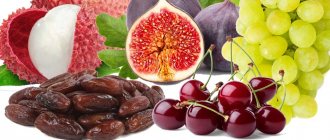Recently, fashion magazines and television advertisements have been actively promoting a gluten-free diet. Many food labels say “gluten free.” Manufacturers consider its absence an advantage of their product.
- But not all people know what the word “gluten” means, and do not even suspect the danger it poses to the body in young or old age.
- There is an allergy to this substance. Therefore, some people should not eat foods containing gluten.
- But what should those who have never even heard of this substance do? Do I need to look for the inscription on the packaging or can I ignore it?
- What is gluten? Why is he considered an enemy of humanity? How does it affect the body? You will find answers to these and other questions in the following article.
What is gluten, and why is it harmful and dangerous?
What is gluten, and why is it harmful and dangerous?
Nowadays, when buying food in stores, it has become fashionable to look at packaging and look for additives that are hazardous to health. So, what is gluten, and why is it harmful and dangerous?
- Gluten is a complex natural protein found in many grains. It can be found in baked goods, pasta, beer, and foods made from oats, rye and barley. Gluten is a gray, odorless gluten.
- Wheat contains a lot of gluten. It is also called gluten. Thanks to gluten, the dough rises well and becomes elastic.
- The danger of this substance lies in the ability of gluing together other proteins that enter the intestines with food. Gluten damages the walls of the small intestine and clogs the blood vessels of the brain and heart.
- Joints, liver and other human organs are affected negatively. This substance begins to be deposited in the tissues, clogging the intestines and blood vessels. If the walls of the small intestine are damaged by gluten, then harmful substances begin to enter the blood through them.
- The modified form of gluten poses a great danger to human health.
Important: Be aware of food products that are labeled as " hydrolyzed vegetable protein " or " textured vegetable protein ." Under all these names lies dangerous gluten.
If the cells of a healthy body can cope with natural gluten, then they cannot cope with modified gluten. All tissues in which the body's immune cells have caught gluten molecules are affected.
Does beer contain gluten?
The beer brewing technology involves the use of malt from barley, a sprouted grain from the list of grains containing gluten. Nutritionists say that the appearance of a “beer belly” among lovers of this drink is due to the presence of gluten in it. Many beer brands decided to take into account the desire of the younger generation to stay in shape and launched so-called “gluten-free beer” on the market.
According to some sources, his recipe was invented by two fellow sufferers who met in one of the European clinics. Both were diagnosed with celiac disease, and doctors forbade them to touch their favorite drink. But the friends decided to bypass the ban and brewed ale according to their own recipe - from sorghum.
When processing grains, there is a high probability of gluten from other grains accidentally included in the total mass of raw materials for beer.
Gluten intolerance and gluten allergy in adults and children: how does it manifest itself, what are the symptoms?
Gluten intolerance and gluten allergy in adults and children: how does it manifest itself, what are the symptoms?
Gluten is especially dangerous for those people who have a genetic predisposition and individual intolerance.
- The body of a healthy person copes well with digesting, but only natural gluten. In addition, cereals contain useful vitamins and microelements that are necessary for the functioning of many organs.
- But people with allergic manifestations should be careful when consuming foods containing gluten, especially modified substances and others.
- According to statistics, one person out of 135 examined patients is allergic to gluten.
How does gluten intolerance and gluten allergy manifest in adults and children, what are the symptoms? An allergy to this substance can be severe or occur without symptoms at all. It all depends on the degree of resistance of the body. The most common symptoms of a gluten allergy are:
- aching pain in the abdominal area that does not go away for a long time;
- flatulence, diarrhea or, conversely, constipation;
- steatorrhea - undigested fat in stool - detection occurs in the laboratory;
- fatigue and fatigue;
- weight gain;
- high skin sensitivity - numbness, itching, tingling, burning;
- headaches, pain in joints and muscles;
- constant thirst;
- burning sensation in the throat.
Young children experience constant tearfulness, constipation, poor appetite, and rapid weight gain. A gluten allergy in a child requires special attention. Treatment usually lasts from several months to 2-3 years.
Important: Allergy sufferers are strictly prohibited from consuming food products with food additives labeled as E with a number.
So why are gluten-free diets so popular?
Most likely, popularity is due to a combination of factors, including:
- People may find this idea close to their hearts.
- Strange logic. Some people think: Gluten is bad for people with celiac disease, maybe it's bad for me too.
- Recognition from celebrities. If gluten elimination is encouraged by someone one admires, an idol or an authority figure, people often trust them and decide that they should try it too.
- Word of mouth. Feedback can be a powerful driver of decision making. Hearing about someone with bothersome symptoms that finally went away after they stopped eating gluten is hard to ignore.
- Marketing - Never underestimate the power of persuasion. Those who sell gluten-free products or books about gluten-free diets are often quite persuasive in their attempts to entice or sell their product, even if they have no scientific evidence whatsoever to support their product and its qualities.
In fact, almost any health intervention involves some risk. Giving up gluten completely is no exception. Before you step into the gluten-free life, and purchase gluten-free products, beware!
This may not only not help you, but it may cause problems, and this, most likely, can seriously “hit your pocket.”
While people in a popular Consumer Reports survey found that gluten-free diets are more nutritious and contain more minerals and vitamins than regular foods, it's much more likely to be the opposite.
Gluten-free foods are generally less fortified with folic acid, iron, and other nutrients than gluten-containing foods.
Gluten-free products have more sugar and fat.
Several studies have found a trend toward weight gain and obesity among those following a gluten-free diet (including those with celiac disease).
Gluten-free products tend to be more expensive than regular products.
This is similar to the case with organic products: people are often willing to pay more for products that they perceive as healthier. The problem is that there is virtually no evidence that these foods are actually better for you.
Blood test for gluten intolerance
Blood test for gluten intolerance
Gluten intolerance is detected in the laboratory using a special allergy test. The immune system of a person with a gluten allergy perceives this substance as a foreign material. She begins to attack him, so even the smallest doses cause severe allergies.
An enzyme immunoassay blood test for gluten intolerance allows you to determine the level of antibodies in the blood serum. If the number of antibodies is large, it means that the human body is fighting an allergic reaction.
The absence of deviations in the level of antibodies indicates that the person does not have allergies. The test result is usually ready within 7 days.
Products containing gluten: list, table
Products containing gluten: list, table
Record holders for gluten content are wheat, rye, barley, oats. In the food industry, vegetable protein is obtained from these crops. This substance is then mixed with water to create a modified enzyme or additive that is included in products of different categories. List:
- bread, bakery products, flour;
- sausage, frankfurters and other products with added meat;
- alcoholic drinks made from cereals: beer, vodka, whiskey;
- chocolate, sweets;
- ketchup, mayonnaise, various sauces.
Detailed table with products containing gluten:
Products containing gluten: table
Gluten is also found in some medications and dietary supplements:
Foods Containing Gluten: Table of Supplements and Medicines Containing Gluten
Prohibited Products
Wheat, rye, oats and all their derivatives are strictly prohibited on a gluten-free diet. The following products should not be consumed:
- wheat, including wheat flour;
- wheat cereals;
- semolina, artek, poltavka, bulgur, couscous, spelled;
- wheat starch, various additives including wheat protein, wheat-based thickeners;
- rye and all types of rye flour;
- kvass and beer;
- barley, including barley flour;
- barley cereals – pearl barley, barley;
- barley malt;
- products containing malt sugar - molasses, extract, vinegar, various flavorings;
- oats, including oat flour, flakes and grits;
- pasta;
- bakery products;
- whole grains;
- ice cream and yoghurts with a long shelf life;
- various canned foods: meat, fish, fruit, vegetables;
- crab sticks;
- sausages, sausages, smoked meats;
- semi-finished products;
- store-bought seasonings and spices;
- flavored tea bags;
- freeze-dried coffee;
- confectionery sweets;
- almost all ready-made sauces: mayonnaise, ketchup, mustard, and so on;
- bouillon cubes;
- soy sauce.
This list of products is not definitive. To be sure that a particular food contains gluten, you need to carefully study the composition presented on the product packaging. It is important to remember that the most important sources are wheat, barley, rye and all products containing them.
Gluten-free products: list, table
There are many foods that do not contain gluten. If you have only recently been diagnosed with an allergy to this substance, then it is better to write down which foods contain gluten and which do not. Then you will get used to proper nutrition and will know which foods you can eat and which you cannot.
So, the list of gluten-free products is a table:
Gluten-free products: list, table
Gluten in porridges
Despite the fact that porridge is one of the healthiest sources of all the microelements the body needs, they can also contain gluten. Gluten-containing cereals and, accordingly, porridges made from them include: wheat, barley (pearl barley), rye, oats.
Oatmeal, although it seems extremely healthy, also contains gluten
The list of gluten-free cereals is more diverse and, if you want to eat right, you can balance a healthy and wholesome menu with them:
- rice - especially wild and brown;
- buckwheat – fried or unroasted;
- millet and millet porridge are a storehouse of healthy protein, fiber, complex carbohydrates and other nutrients;
- corn porridge and pasta or corn tortillas.
Knowing which cereals contain gluten and which are gluten-free allows you to correctly and with maximum benefit create your daily diet
It is recommended that you familiarize yourself with the complete list of grain cereals that are harmful for celiac disease and beneficial for a healthy diet in the article “Gluten in cereals.”
Gluten free diet: menu
Gluten-free diet: menu
Excluding gluten from the diet helps improve immunity, metabolism, digestion and cleanse the intestines. The waste products that are deposited in the small intestine when eating foods rich in gluten will be excreted from the body when using a gluten-free diet. Your health will improve, weight will begin to decrease, fatigue will disappear and a surge of strength will appear.
The gluten-free diet is widespread among show business stars and actors. Sample menu for the week:
Monday
Breakfast:
- two hard-boiled eggs;
- freshly brewed tea - 1 or 2 glasses.
Dinner:
- vegetarian vegetable soup - 150 grams;
- boiled beef - 100 grams;
- fresh vegetables - 50-100 grams;
- thin berry jelly.
Dinner:
- boiled fish - 100 grams;
- baked vegetables - 100 grams;
- herbal tea - 1 glass.
Tuesday
Breakfast:
- boiled millet porridge - 150 grams;
- herbal tea from thyme or oregano - 1-2 glasses.
Dinner:
- mushroom soup with vegetables - 150 grams;
- boiled pork - 70 grams;
- steamed vegetables - 100 grams;
- fruit juice without sugar.
Dinner:
- baked fish - 100 grams;
- buckwheat porridge - 100 grams;
- fresh vegetables - 150 grams;
- freshly brewed tea - 1 glass.
Wednesday
Breakfast:
- corn porridge - 150 grams;
- chicken fillet - 100 grams;
- oregano tea with mint - 1-2 glasses.
Dinner:
- meat broth with potatoes - 150 grams;
- boiled beef - 100 grams;
- buckwheat porridge - 100 grams;
- fresh salad - 50 grams;
- berry juice without sugar - 1 glass.
Dinner:
- boiled potatoes, seasoned with vegetable oil - 150 grams;
- stewed mushrooms - 100 grams;
- steamed vegetables - 70 grams;
- tea - 1 glass.
Thursday
Breakfast:
- boiled rice seasoned with butter - 150 grams;
- egg - 1 piece;
- milk - 1 glass.
Dinner:
- vegetarian soup - 150 grams;
- chickpea or lentil porridge - 100 grams;
- boiled pork - 70 grams;
- chamomile tea - 1 glass.
Dinner:
- steamed vegetables - 150 grams;
- natural boiled shrimp meat - 70 grams;
- unsweetened fruit drink - 1 glass.
Friday
Breakfast:
- millet porridge - 150 grams;
- curd mass made from natural cottage cheese, sour cream and milk - 70 grams;
- tea from twigs of any fruit tree - 1-2 glasses.
Dinner:
- meat broth with potatoes and vegetables - 150 grams;
- steamed chicken cutlets - 100 grams;
- vegetables baked in the oven with the addition of vegetable oil - 100 grams;
- berry juice - 1 glass.
Dinner:
- steamed fish cutlets - 100 grams;
- buckwheat porridge - 100 grams;
- fresh vegetables - 70 grams;
- freshly squeezed carrot or apple juice - 1 glass.
Saturday
Breakfast:
- steamed fish - 70 grams;
- boiled rice - 150 grams;
- fruit compote without sugar - 1 glass.
Dinner:
- meat broth with beef meatballs - 150 grams;
- baked vegetables - 100 grams;
- boiled potatoes - 70 grams;
- Grated apple juice - 1 cup.
Dinner:
- buckwheat porridge - 150 grams;
- boiled chicken meat - 100 grams;
- fresh green salad - 70 grams;
- kefir or fermented baked milk - 1 glass.
Sunday
Breakfast:
- boiled quinoa - 150 grams;
- steamed fish - 50 grams;
- lettuce leaves - 50 grams;
- linden flower tea - 1 glass.
Dinner:
- pea and potato soup without meat - 150 grams;
- boiled brown rice - 100 grams;
- steamed chicken fillet - 100 grams;
- thin jelly without sugar - 1 cup.
Dinner:
- buckwheat pudding - 150 grams;
- steamed vegetables - 100 grams;
- tea from fruit tree branches - 1 glass.
Gluten-free diet
Bread can be eaten, but gluten-free, since synthetic gluten is added to regular baked goods. Give preference to whole grain bread without flour or yeast. This bread is more expensive than the breads you see on store shelves, but it is healthier.
If you are used to snacking for second breakfast or afternoon snack, then prepare yourself a baked apple or fruit salad in advance. Nuts or fruit jelly are also suitable for snacking. For the second dinner, you can drink a glass of kefir or milk. You can change the presented menu at your discretion by adding other gluten-free products and dishes.
Gluten-free food list
Congenital intolerance to foods containing gluten - celiac disease - brings a lot of trouble to people suffering from it. Even a small amount of pure gluten accidentally introduced into the diet can cause inflammation in the small intestine. But gluten is used in the production of a wide variety of products consumed by humans, and is extremely in demand in the cuisine of vegans and vegetarians. And yet, a list of gluten-free products exists and makes it possible to create a specialized diet.
If a product is labeled “gluten-free,” it means it does not contain gluten.
Cereals and porridges
Not all grains contain protein, which some people have difficulty digesting. To prepare porridges, you can use gluten-free cereals from the following list:
- buckwheat;
- corn;
- rice;
- sorghum.
It is allowed to include legumes in a gluten-free diet - peas, soybeans, lentils.
Regarding oats, you can often find opposite opinions - both that they do not contain gluten, and that they are prohibited products for celiac disease. It may seem surprising, but both theses are true. As a Canadian study showed, there is indeed no gluten in oats, but there is another protein - avenin, which is related to gluten. For this reason, oats can cause individual intolerance.
For products such as oatmeal cookies or instant cereal, these products contain both avenin and gluten. The latter appears due to the peculiarities of production, when wheat, rye or barley components enter the final product.
Warnings that the product contains traces of gluten can be found on packages even with safe cereals and legumes.
Pasta
For many people, pasta is an integral part of their diet, so switching to a gluten-free diet can be quite stressful. Manufacturers producing gluten-free products have found a solution to this problem that will benefit consumers. For example, gluten-free pasta from MAKFA is made from corn and rice flour.
Fusilli brand pasta made from rice and two types of corn flour (white and yellow) is also gluten-free. This Italian product (pasta) comes in different types:
- spirals;
- feathers
- spaghetti.
Information on the pasta of these brands guarantees the safety of consumption of these products by people with celiac disease.
Gluten-free pasta series “Makfa”
Cookie
Gluten-free cookies are made from several types of flour - corn, rice, oatmeal. Quite often, gluten-free cookies are simultaneously a dietary product for those who are lactose intolerant - milk sugar, and for diabetics. All these nuances are usually indicated on the packaging of specific products.
You can not only buy gluten-free cookies (trademarks Bebi, Gullon, Honey Stinger) but also prepare them yourself. This benefit would be a good addition to a gluten-free diet indicated for celiac disease.
Bread
Many food companies produce gluten-free bread - “Dr. Kerner", "Sugaroff", "Healthy" and others. Bread can be purchased:
- rice with vitamins;
- Crispy Corn Rice Caramel;
- rice with dark chocolate;
- buckwheat with dietary vitamins;
- rice and corn without gluten and lactose;
- amaranth with Jerusalem artichoke and others.
If a child or adult has diabetes or lactase deficiency, this does not necessarily mean that they need to eat gluten-free foods. Only a doctor can give such a recommendation based on laboratory blood tests.
Healthy bread
Soy sauce
In the recipes of many soy sauces, gluten is present as a food additive - a thickener. Gluten-free soy sauce, like most gluten-free products, costs significantly more (about 6-7 times). The production of such products is carried out by The New Primal, Brianna X, Kikkoman and others.
Sweets
The “Gluten Free” mark can also be seen on children’s favorite sweets – candies and marshmallows. It can be:
- pastille “Apple” from Pasti Food;
- citrus candy from Candy Tree;
- Apple-Blueberry candies from Bob Snail;
- marshmallows from Smart Sweets;
- apple marmalade from “Sweet World” and other products.
When selecting sweet delicacies, you should pay attention to other characteristics. Many of these products are made without added sugar or lactose, which makes them suitable for use in the diet of people with diabetes or lactose intolerance.
Baby food
It is not always possible to diagnose celiac disease in a young child in a timely manner, since the symptoms of celiac enteropathy usually create a false clinical picture. Symptomatically, celiac disease is similar to iron deficiency anemia, rickets, and anorexia. Children exhibit:
- chronic diarrhea;
- delayed physical development;
- poor appetite;
- capriciousness.
Signs of celiac disease
Typically, symptoms appear by 9-18 months, that is, by the time when, in addition to breastfeeding, complementary foods are actively included in the children's menu. It has been noticed that in children who are bottle-fed, this disease is detected earlier. In this case, the problem of gluten-free baby food becomes urgent. Baby cereals, purees and other gluten-free products can be chosen from organic baby food brands:
- "Spongebob";
- “Eat Healthy”;
- "Smart Sweets"
The companies producing mixtures are Healthy Times, Heins, Gerber, Spelenok, Agusha, Babushkino Lukoshko and many others. Very popular gluten-free porridges from this list:
- dairy-free oatmeal from Hipp;
- dairy-free Remedia;
- dairy-free corn with prebiotics from Fleur Alpine;
- milk oatmeal with banana FrutoNyanya;
- milk rice with apple from Nestle;
- milk buckwheat Bebi.
When choosing gluten-free cereals for your baby, it is worth discussing the advisability of using them with your pediatrician.
If a child does not have problems digesting gluten, there is no need to strive for specialized nutrition just because it is considered fashionable.
Gluten during breastfeeding: is it transmitted through breast milk?
Gluten during breastfeeding: is it transmitted through breast milk?
Scientists have conducted many studies that prove that when a nursing mother consumes gluten foods, this substance will be contained in the milk and transferred to her baby during feeding. Therefore, doctors increasingly began to diagnose infants with a gluten allergy.
To protect your child from this disease, a new mother should know that gluten is transmitted through her milk during breastfeeding. Mom is obliged to follow a gluten diet, especially if the pediatrician diagnoses her baby with an allergy. The doctor may not prescribe a blood test to detect antibodies, since a lot of blood will have to be taken from the baby. Often, pediatricians simply tell the mother to eliminate gluten-containing foods from her diet.
Interesting features of gluten
Here are some more interesting facts about gluten in food and drinks.
- Natural milk does not contain this component at all, but if a thickener has been added to products based on it, then it is likely that the presence of protein will be detected.
- Many people are interested in the question: is there gluten in potatoes? After all, this beloved root vegetable is present in national dishes, and in almost all soups? The vegetable itself does not contain gluten. This makes it an excellent alternative to cereal on a gluten-free diet. But traces of wheat protein are already found in French fries or chips.
- Note to beer lovers: this drink also contains gluten, which is added to the drink during the production process.
Do not forget that nutritionists strongly recommend reducing the consumption of wheat protein with age, since the ability to digest it is lost in adulthood.
Why is gluten harmful after 40, 50 years?
Why is gluten harmful after 40, 50 years?
Gluten is dangerous because it is deposited on the intestinal walls, damaging them. Through these microscopic cracks, harmful substances begin to enter the blood, destroying internal organs, blood vessels, and the heart. Why is gluten harmful after 40, 50 years? At this age, against the background of a clogged intestine, the following ailments and diseases may appear:
- Fragile blood vessels, which leads to stroke and heart attack.
- Increased risk of cancer, diabetes.
- Irritable bowel syndrome - adhesions and other diseases.
- Damage to nerve endings, damage to blood vessels in the brain. A person loses his memory, confuses names, and begins to age quickly.
- Excess body weight or, conversely, severe thinness.
- Diarrhea, constipation, metabolism, bloating.
- Complex anemia requiring blood transfusion.
Take care of yourself : If you have a disease that is difficult to treat, it may be due to poor gluten absorption. Try going on a gluten-free diet and see if you feel better.
Complications of gluten intolerance
If left untreated, gluten sensitivity can lead to serious complications such as:
- Anemia. As a result of the damage caused by gluten, the intestines stop absorbing enough iron from food, which leads to iron deficiency and the development of anemia.
- Osteoporosis. This disease is characterized by a decrease in the strength of bone tissue.
- Hypotension. Most patients have low blood pressure.
- Gluten ataxia. With this disorder, the ability of muscles to move synchronously is disrupted.
- Avitaminosis. A lack of nutrients leads to harm due to an imbalance of essential vitamins.
- Bullous polymorphic dermatitis of Dühring. This specific skin disease is characterized by profuse rashes and severe itching.
- In particularly difficult cases, this can cause harm to gastrointestinal cancer.
Timely withdrawal of gluten-containing products will help to avoid such complications.
Why is gluten dangerous for older people?
Why is gluten dangerous for older people?
In old age, a person’s health is poor, especially if his main food throughout his life was gluten in the form of flour bread, confectionery, baked goods, sausages and other synthetic food products. The intestines are clogged, the blood vessels are fragile, the heart is weak. Why is gluten dangerous for older people if we continue to consume foods containing this substance?
The forecast is disappointing:
- Irritable intestines will lead to the formation of adhesions - in this case, surgery is not possible.
- Weak blood vessels will lead to stroke or heart attack.
- Sick joints - arthritis and other diseases will appear.
- Anemia can become a chronic disease that occurs seasonally or continuously.
These and other problems will not go away if the elderly person does not stop eating regular bread made from wheat or rye, which is on the shelves, and consumes store-bought yoghurts, sweets, pastries, and confectionery products with the addition of modified substances.
Important: If you want to improve your health, completely change your diet - switch to a gluten-free diet. But before doing this, consult your doctor so that he can assess all the risks. After all, old age is no joke. Typically, a person over 70 years of age has many concomitant chronic diseases.
Why is gluten dangerous for older people?
Gluten-free products Want to be healthy? Give preference to grain porridges, fresh vegetables, soups and natural meat. Avoid store-bought synthetic foods such as sausages, confectionery, chocolate, yoghurts, sweet curds with modified starch and gluten.
Eat what you prepare yourself, then you will know what is going into your body. If you are allergic to gluten, follow a special diet. Be healthy!
Gluten: harm and benefit - summing up
In fact, for most people gluten does not pose any danger; in moderate doses it is neither harmful nor beneficial. In order not to get an overdose of gluten, you need to eat a varied and healthy diet, eat home-cooked food, more vegetables and fruits, eat less processed foods from the store and fast food, and not get carried away with baked goods. After all, gluten intolerance is essentially a rebellion of the body against monotonous food. And if you are still concerned about the high amount of this protein in your family’s daily diet, then try eating products made from grains such as spelled and farro, and when baking and preparing semi-finished products, use gluten-free flour - rice, buckwheat or corn - it is not subject to genetic modification .
In addition, there is no gluten in potatoes, brown, wild and black rice, buckwheat, pearl barley, amaranth, quinoa, so you should simply consume these products more often than pasta made from wheat flour. Eat bread with the addition of various cereals - this allows you to reduce the proportion of wheat in it by half. By the way, with such a diet you will most likely even lose excess weight, if you have any of course. And avoiding excessive consumption of wheat products can help reduce appetite. Remember, healthy eating is the main thing in taking care of the body. Eat healthy and natural foods and then not only celiac disease, but also many other diseases will not be scary for you.
Thanks for sharing with your friends!
- 1











